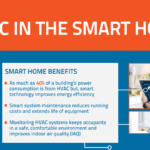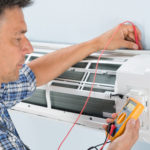 For as long as people have been heating and cooling their homes, there’s been a complicated relationship between energy loss and indoor air quality (IAQ). In fact, conventional wisdom dictates the two are more or less always at-odds: The more efficient a building is, the poorer the IAQ is. Right? Well, not quite.
For as long as people have been heating and cooling their homes, there’s been a complicated relationship between energy loss and indoor air quality (IAQ). In fact, conventional wisdom dictates the two are more or less always at-odds: The more efficient a building is, the poorer the IAQ is. Right? Well, not quite.
It’s true that balancing IAQ with energy efficiency presents a rather complex design challenge, but there are strategies and technologies available to bring the two into harmony.
For today’s HVAC specialists, this need to balance the relationship between IAQ and energy efficiency should be front-of-mind at all times, as concern is on the rise among consumers. This is being driven by the adoption of more stringent energy efficient standards in both new construction and retrofits, and the growing awareness of how poor air quality impacts your short- and long-term health.
How efficiency can degrade air quality
The more airtight (and energy efficient) a building is, the less fresh outside air there is flowing in. This is the crux of the IAQ-efficiency dilemma, and as energy efficiency standards and technology have advanced there’s been a rise in consumer complaints about poor indoor air quality.
Airtight buildings that aren’t venting air to the outside, and drawing fresh air in, suffer a build up of moisture and humidity, along with typical household smells and odours. Even the off-gassing from plastic material in a home or building, such as furniture and carpets, can contribute to poor air quality.
The bottom line: Today’s energy efficiency measures can actually contribute to and cause ongoing IAQ issues.
Striking a balance between the two
Part of the solution to this dilemma is to increase ventilation and bring more fresh air into the building, but that’s only part of the fix. For starters, outdoor air can contain just as many pollutants and contaminants as indoor air. Moreover, simply expelling mechanically heated or cooled indoor air and drawing in outdoor air is decidedly inefficient.
This means the two goals—energy efficiency and healthy indoor air—need to be achieved in tandem. One can’t undercut the other. Outside air coming into the building must be tempered (heated or cooled) to offset the energy loss of expelled inside air. And if the outdoor air quality is poor, that air must be filtered as it’s being drawn into the building.
How HVAC specialists can help design advanced solutions
From retrofits to upgrades to new construction, HVAC specialists are in a prime position to prevent, manage, and solve ongoing IAQ issues. Beyond standard solutions, such as energy recovery ventilators and supply fans that filter outside air, smarter technology is presenting new add-on and up-sale opportunities.
Hardware solutions like dedicated outdoor air systems (DOAS), which simultaneously manage energy use and ventilation, are gaining more and more traction in recent years. These systems draw in outdoor air mechanically without sacrificing energy efficiency, making them a prime area of specialization for HVAC installers seeking to stay one step ahead of industry demand.
On the operational side of the equation, there are advanced strategies that HVAC specialists can build into a system’s automatic schedules, such as drawing cool night air in to pre-cool a building for the hot day ahead while expelling indoor air contaminants. Preventative maintenance of HVAC equipment is another crucial step to ensuring optimal efficiency, but specialists should also consider adding IAQ checks to their maintenance routines. This can be done with IAQ monitors or through a dedicated system of sensors.



